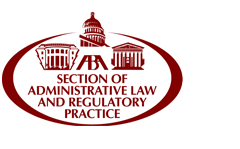Article Title
The Tsunami of Health Care Rulemaking: Strategies for Survival and Success
Volume
63
Issue
2
First Page
245
Abstract
In 2011–2015, health care regulation changes will present new challenges and opportunities to the novice lawyer in a general practice law office. Our purpose in this Article is to guide the novice at federal administrative rulemaking through the very challenging rulemaking aspects of implementing the Patient Protection and Affordable Care Act (PPACA or the Act). Even if you skipped the administrative law and health law courses in law school, your clients will ask for your help, and you can cheerily offer to guide them. Individuals, nonprofit groups, companies, doctors, pharmacies, hospitals, local governments, states, insurers, investment analysts, and product manufacturers are among the many types of law firm clients who will struggle with the implementation of the 2010 health care reform legislation. How well you perform in this rule-writing context may shape the future of your practice when more health law issues arise for your clients.
So much money is at stake for these clients that accurate advising and thoughtful preparation on Department of Health and Human Services (HHS) rules could be essential to sustaining your role in those clients’ profitable health care businesses. Rulemaking comments, well crafted and effectively supported by data, will be your future goal in serving these clients. Your sensitivity to federal and state motivations will result in more effective comments and meeting participation; the clients will benefit from your thoughtful preparatory work.
We confess that a guide to this massive law is impossible in these few short pages. We could try to parse its 406,887 words, slog through the 906-page PDF version from the Government Printing Office website, or even dance through the twelve-page table of contents for Public Laws 111-148 and 111-152, the basic statute and the companion “reconciliation” bill. Instead, in order to be both pragmatic and helpful, we will orient this Article toward aiding the novice in successfully drafting and submitting comments on the many agency rules that implement the new law’s complex commands and constraints.
There is no question that PPACA will result in a tsunami of new administrative rulemaking. Although some of this important work has already begun and will be discussed below, there is still much more to come. This rulemaking will be contentious, pitting politicians, agency heads, insurers, industry lobbyists, health care consumer advocates, and individuals against each other in a monumental battle to shape the regulations that will ultimately define health care in America. By analogy, those health care participants who wander onto the PPACA “beachfront” unaware and unprepared for this particular tsunami could be overwhelmed by the roiling flood of red tape before they have a real opportunity to have any impact on the rulemaking process.
If the aphorism is correct that “the world is run by those who show up,” the 2011 world of health care reform rulemaking is being run by a few dozen law firms and corporate lobbyists, that represent major industries with financial stakes in the PPACA reforms. They have equal free speech rights, but their sophistication in rulemaking can make them seem more equal than other smaller players.
This Article will target the needs of the small firm, solo, or public interest attorney who cares enough to advocate for the economic interests of citizens, patients, and less affluent players. We hope to provide you with the navigational tools you will need to have a say in this critical rulemaking that will define health care delivery and medical cost coverage for decades to come. This Article will also provide an overview of some of the most critical provisions in the legislation and an explanation of where the rulemaking on those segments will take us.
